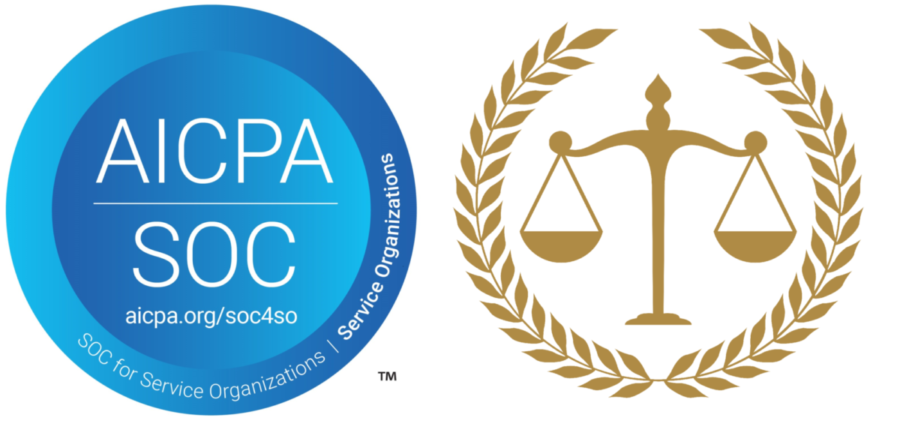Learn why SOC 2 compliance is essential for law firms in 2024 to ensure data security, client trust, and compliance with industry standards.
In today’s digital landscape, ensuring data security is not just important—it’s imperative, especially for law firms that handle sensitive client information every day. SOC 2 certification is a trusted standard that ensures a law firm adheres to the highest security practices, thus gaining client trust.
What is a SOC 2 Certification?
SOC 2 (System and Organization Controls 2) Type 2 reports focus on an organization’s controls relevant to the Trust Services Criteria: security, availability, processing integrity, confidentiality, and privacy. High-level controls required for SOC 2 Type 2 compliance typically include:
1. Security: safeguards law firms’ systems from unauthorized access, preventing data breaches that could lead to severe legal and reputational damage.
· Access Controls: Measures to ensure only authorized individuals have access to systems and data.
· Firewalls and Network Security: Protection against unauthorized access and cyber threats.
· Endpoint Security: Protection of devices connected to the network.
2. Availability: ensures that law firms’ systems and services are always accessible, meeting client needs and court deadlines.
· Disaster Recovery and Business Continuity: Plans and processes to ensure systems can recover from disruptions.
· Data Backups: Regular backups and secure storage of critical data.
· Capacity Management: Monitoring and managing system capacity to prevent overloads and ensure availability.
3. Processing Integrity: guarantees that data processing is accurate, complete, and timely, crucial for preventing errors in legal documents.
· Data Validation: Controls to ensure data is processed accurately and without unauthorized changes.
· Error Handling: Mechanisms to detect and address errors in data processing.
· System Monitoring: Continuous monitoring of systems to ensure they are functioning as intended.
4. Confidentiality: protects sensitive information from unauthorized access, maintaining client trust and complying with legal and ethical standards.
· Data Encryption: Use of encryption for data at rest and in transit to protect sensitive information.
· Information Classification: Classification of data based on its sensitivity and the application of appropriate controls.
· Secure Data Disposal: Procedures for securely disposing of data that is no longer needed.
5. Privacy: ensures personal data is handled in accordance with privacy regulations, reinforcing client trust and compliance.
· Privacy Policies: Clear policies on how personal information is collected, used, and disclosed.
· Consent Management: Processes for obtaining and managing user consent for data collection and use.
· Access and Correction: Mechanisms allowing individuals to access and correct their personal information.
These controls are often supported by policies, procedures, and technical measures that align with industry best practices and regulatory requirements. The specific implementation of these controls can vary based on the organization’s size, industry, and specific risks.
The Journey: SOC 2 Type 2 Compliance Process
SOC 2 Type 2 compliance for law firms involves a structured process to ensure that the firm’s information security practices meet the Trust Services Criteria. The process typically includes the following steps:
1. Scoping and Readiness Assessment
· Determine Scope: Define the boundaries of the audit, including systems, processes, and data to be covered.
· Identify Objectives: Align the SOC 2 objectives with the firm’s business goals and client requirements.
· Readiness Assessment: Conduct an internal review to identify gaps in current controls and prepare for the audit.
2. Gap Analysis and Remediation
· Gap Identification: Identify deficiencies in existing controls compared to the SOC 2 requirements.
· Remediation Planning: Develop a plan to address identified gaps, including implementing new controls or enhancing existing ones.
· Implementation: Execute the remediation plan, ensuring all necessary controls are in place and operational.
3. Documentation and Policy Development
· Policy and Procedure Development: Create or update policies and procedures to reflect the implemented controls.
· Documentation of Controls: Maintain detailed records of the controls in place, including descriptions, purpose, and evidence of effectiveness.
· Training and Awareness: Ensure all relevant personnel are trained on the policies and procedures.
4. Control Monitoring and Testing
· Ongoing Monitoring: Implement processes for continuous monitoring of controls to ensure they are functioning as intended.
· Internal Testing: Conduct internal audits or tests to validate the effectiveness of controls.
· Evidence Collection: Gather evidence that demonstrates the consistent operation of controls over a period of time.
5. Engaging an External Auditor
· Select an Auditor: Choose a qualified independent audit firm with experience in SOC 2 audits.
· Audit Planning: Work with the auditor to plan the audit, including timelines, scope, and key contacts.
· Fieldwork: The auditor will conduct the fieldwork, reviewing control documentation, testing controls, and gathering evidence.
6. Audit Report and Findings
· Audit Report: The auditor issues a SOC 2 Type 2 report, which includes a description of the system, the controls in place, and the auditor’s opinion on the effectiveness of these controls.
· Management Response: The firm can respond to any findings or recommendations made by the auditor.
7. Ongoing Compliance and Improvement
· Continuous Improvement: Address any findings from the audit and make improvements to the control environment.
· Annual Reassessment: SOC 2 Type 2 reports are typically valid for 12 months, requiring annual reassessment and re-certification to maintain compliance.
Considerations for Law Firms· Client Data Confidentiality: Given the sensitivity of client information, law firms often focus heavily on confidentiality controls.
· Vendor Management: Ensuring that third-party vendors meet SOC 2 standards is crucial.
· Regulatory Compliance: Compliance with specific legal and regulatory requirements, such as GDPR or HIPAA, may also be necessary.
The SOC 2 Type 2 process is iterative and requires a commitment to continuous monitoring and improvement to maintain compliance and protect sensitive information.
Critical Risks of Non-SOC2 Compliance in the Legal Sector
Skipping the SOC2 compliance in the legal sector presents numerous significant risks that can disrupt both the practice and reputation of a law firm. The exposure of sensitive legal information, such as confidential client communications and legal strategies, is a major concern, potentially leading to unauthorized disclosure and severe repercussions. This breach compromises client privacy undermines legal proceedings and can result in legal liabilities and ethical violations. The foundational trust between attorney and client is also at risk, which can lead to client attrition and difficulty in attracting new clients. Overall, non-compliance with SOC2 can have far-reaching consequences, threatening the confidentiality, integrity, and trust essential to legal practice.
PaayaTech’s Commitment to Legal Industry Best Practices
At PaayaTech, we understand the critical importance of data security for law firms. We’re proud to announce our SOC 2 Type 2 certification from Johanson Group LLP, highlighting our commitment to the highest data protection standards.
In addition to securing this prestigious certification, we are dedicated to helping our clients, particularly law firms, achieve the same level of compliance. Our expert consulting services include comprehensive SOC 2 readiness assessments, scoping and gap analysis, and implementation support. With our guidance, law firms can confidently navigate the path to SOC 2 certification, ensuring their operations meet the rigorous requirements for security, availability, processing integrity, confidentiality, and privacy.
Ready to elevate your firm’s security and operational standards? Reach out to us at [email protected] and let’s get started on your path to SOC 2 certification.




